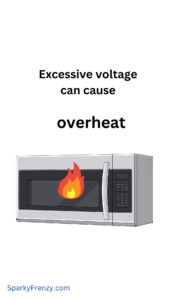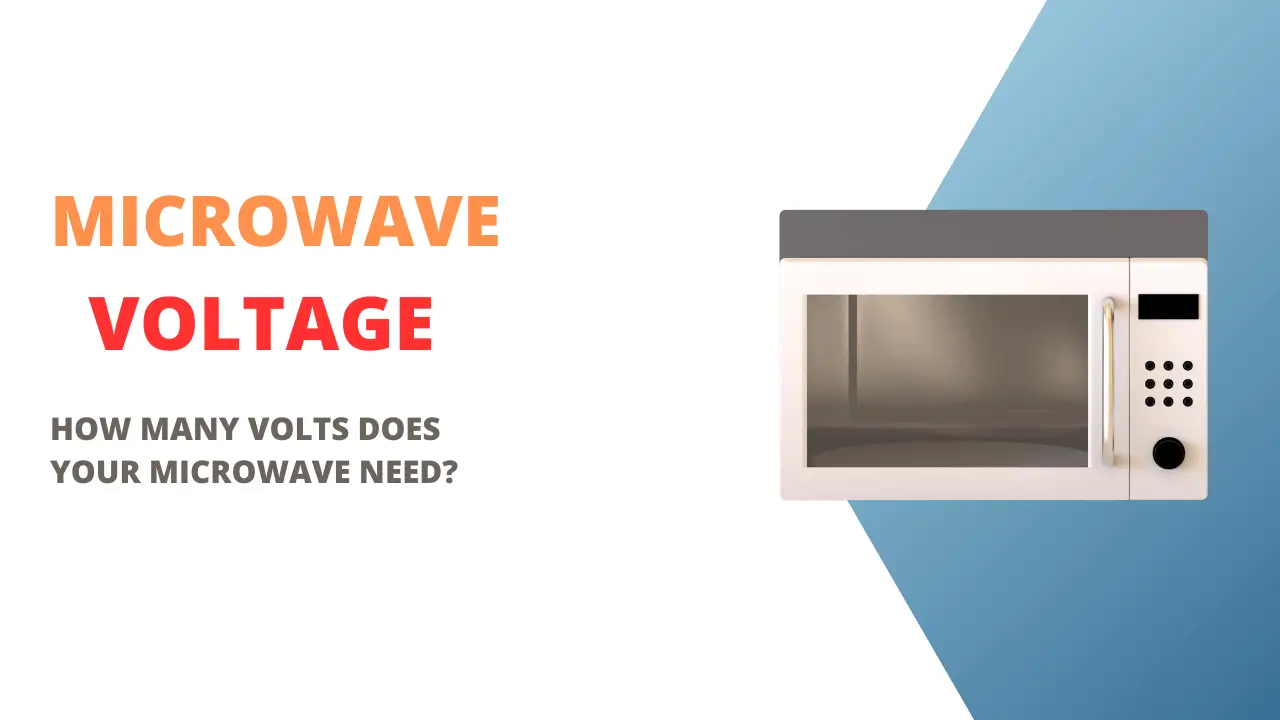Microwave ovens have become an indispensable part of modern kitchen appliances. They offer quick and convenient cooking solutions for our busy lives.
Yet, when it comes to their technical aspects, many of us find ourselves puzzled by questions like, “How many volts does a microwave use?” Understanding the voltage requirements of your microwave is essential for safe and efficient usage.
Microwaves, as common household appliances in the USA, are designed to operate on the standard electrical voltage of 120 volts.
In this article, we’ll explore the world of microwave oven voltages, their significance, and how they can impact your microwave’s performance.
How a Microwave Oven Works
Microwave ovens utilize electromagnetic waves to heat and cook food. These waves are produced by a microwave generator, and the key component in controlling this process is the voltage.
The voltage supplied to the microwave determines its power output, measured in watts. Higher-wattage microwaves tend to cook food faster and more evenly.
Voltage Requirements for Microwaves
The typical voltage requirement for household microwave ovens in the USA is 120 volts. Most microwaves you find in stores and online will operate at this standard voltage.
However, there are exceptions, especially in commercial or specialized models, which may require higher voltages.
It’s crucial to check the voltage compatibility of a microwave, especially if you are moving from one region to another or purchasing an appliance from abroad.
Some countries may have different voltage standards, so using a microwave with incompatible voltage could lead to performance issues or even damage the appliance.
Factors Affecting Microwave Voltage
The voltage requirement of a microwave is influenced by various factors, including its size, capacity, heating technology, and additional features.
Larger microwaves with higher capacities generally require more power, hence a higher voltage. Moreover, advanced heating technologies and added functionalities like convection or grill modes can increase power consumption, leading to higher voltage needs.
Handling Voltage Fluctuations
In the USA, voltage fluctuations can occur due to various reasons such as weather conditions, power grid instability, or electrical system malfunctions. These fluctuations can have adverse effects on your microwave and other appliances.
To protect your microwave from voltage spikes and surges, consider investing in voltage regulators or surge protectors. These devices help stabilize the voltage supply and prevent potential damage to your valuable appliances.
Read also my article: Shield Your Microwave: Can You Use Stabilizer for Microwave?
The Impact of Voltage on Microwave Performance

Both low and high voltages can affect the performance of your microwave. If the voltage supplied is too low, your microwave might not function optimally, resulting in longer cooking times or incomplete heating.
On the other hand, excessive voltage can cause internal components to overheat or even lead to electrical hazards.
Always ensure your microwave is operating within the recommended voltage range to ensure efficient cooking and longevity of the appliance.
Checking the Voltage of a Microwave
To determine the voltage requirement of your microwave, check the user manual or the label on the back of the appliance.
It should clearly state the required voltage and wattage. If you’re still unsure, you can use a multimeter to measure the voltage or seek assistance from a professional technician.
Ensuring Safety While Using Microwaves
When using a microwave, follow general safety precautions such as never operating it when empty, using microwave-safe containers, and avoiding metal or aluminum foil inside.
Moreover, stay aware of voltage-related hazards and ensure proper grounding of your microwave to minimize the risk of electric shocks.
Regular maintenance of your microwave can also help identify any voltage-related issues and keep the appliance running smoothly.
Upgrading or Replacing a Microwave
If you’re considering upgrading your microwave or purchasing a new one, take into account the voltage compatibility.
Choose a microwave that matches the voltage standard of your region to avoid any inconvenience or safety concerns.
Sustainable and energy-efficient options are also available, which not only save electricity but contribute to reducing your carbon footprint.
Conclusion
Understanding the voltage requirements of your microwave is crucial for its safe and effective operation.
Most household microwaves in the USA use 120 volts, but exceptions exist, so always check the appliance’s voltage compatibility before purchase or use.
Handle voltage fluctuations cautiously, and invest in protective devices to safeguard your microwave from electrical instabilities.
By following these guidelines, you can ensure a hassle-free and enjoyable cooking experience with your microwave oven.


